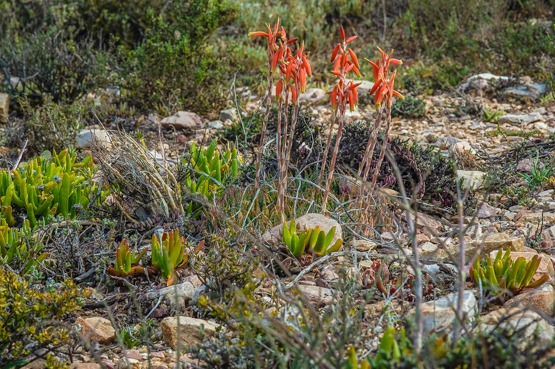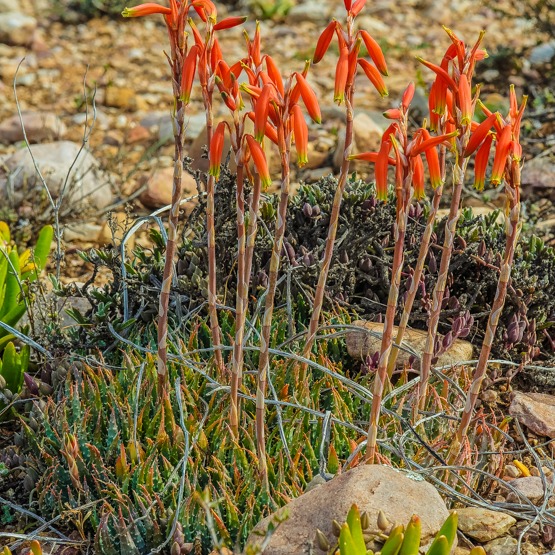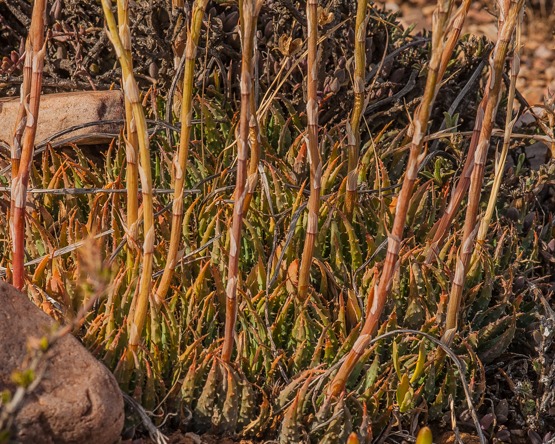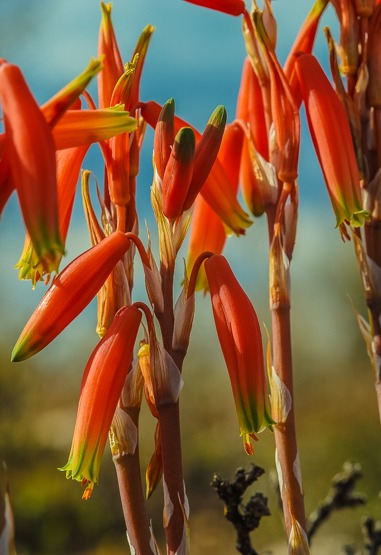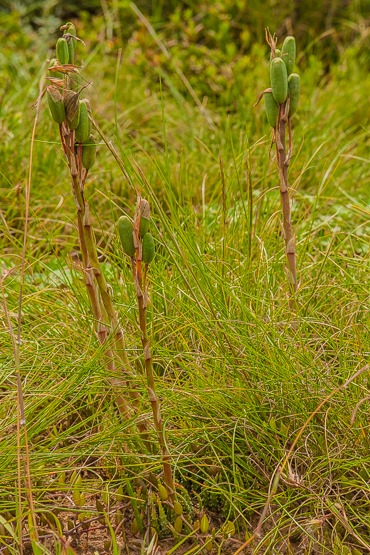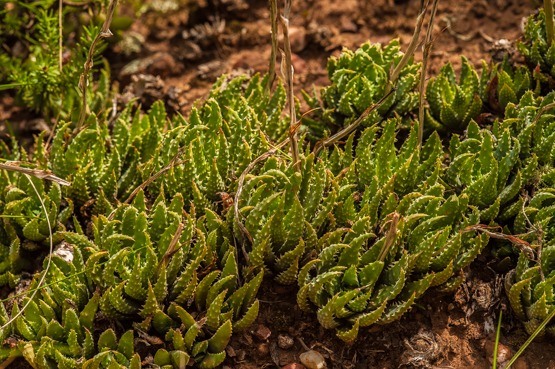Although this species is very variable, it is easy to recognize (Aloe longistyla is somewhat similar, but usually grows as a single plant). The distribution area stretches from Mossel Bay to Graaff-Reinet and Somerset West, and the plants are most abundant in rocky loamy soils under shrubs. Plants from the Eastern Cape (pics 5 -7) are less robust than those from the southwestern part of the area (pics 1 – 4).
“Humilis” means “low growing” and refers to the stemless rosettes, which usually form dense clumps up to 40 cm or more in diameter. Each rosette consists of 20-30 leaves, erect or slightly incurved, with a distinct grey-green waxy layer, unspotted, about 10 cm long and up to 1.8 cm broad, with many small soft white prickles on both surfaces and soft white teeth along the margins.
About 20 flowers are gathered in single inflorescences of up to 35 cm tall. They appear from August to October and are scarlet or more rarely orange or yellow. With a length of about 4 cm, they are rather large for such a small plant.
It may be of interest to note that the species was cultivated in the Dutch East India Company’s garden in Cape Town as early as 1695.
